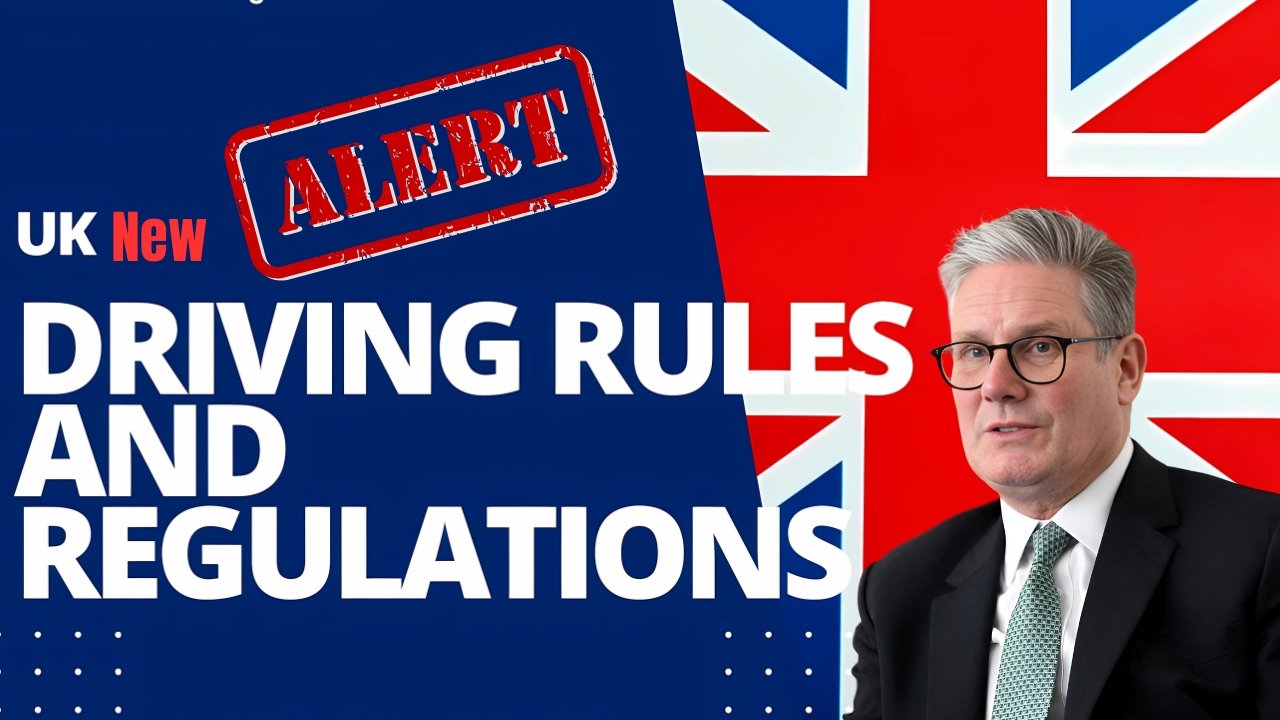
New UK Driving Law 2025: Traffic safety rules are about to get a major overhaul, as England and Wales get ready to cut drink-driving limits. The new rules are planned for 2025 and will be the biggest shake-up since the Road Safety Act of 1967.
The Current Alcohol Threshold for British Drivers
Right now, the limit for drivers here is 80 micrograms of alcohol per 100 millilitres of blood, which works out to roughly 35 micrograms when you blow into a breathalyser. This figure hasn’t budged for a long time, even though research shows that even small amounts of alcohol can affect your driving.
Scotland led the way by lowering the limit to 50 micrograms back in 2014, matching the standard used in many other European countries. This left drivers crossing the border to deal with a frustrating mix of rules, since Wales and England still follow the older, higher limit.
The Changes Coming Soon: Lower Alcohol Limits Are Coming
New rules are on the way that will bring England and Wales in line with Scotland by lowering the breath-alcohol limit to 50 microgrammes. But the Labour government is now pushing for an even tougher standard of 22 microgrammes. If that goes through, the practical effect for drivers will be to steer clear of having any alcohol in their system before getting behind the wheel.
The tougher limits are part of a bigger package aimed at reducing the stubborn number of drink-drive deaths. Last year, even with newer car safety features, alcohol-related crashes still took 260 lives and hurt another 6,300. For the government, that is too many in a time when technology is supposed to be saving lives on every journey.
The Science Behind the Stricter Standards
Researchers have gathered hard facts that back the new lower legal limit for alcohol at the wheel. Studies show that drivers hitting the existing cap of 80 micrograms behave like someone who just sipped one drink—just that tiny amount raises their crash risk six times higher than someone who’s completely sober. A drink’s worth of delay makes reflexes slow and judgment wiggy at the same time, turning our bodies and minds into dodgy GPS units. The science gives lawmakers no wiggle room.
Scotland lowered its motorway threshold not long ago, and the lesson is clear: cops saw the numbers go down overnight. Roads looked safer not just because of the law, but because radio ads and social media posts kept telling the same message—drink and drive, dignity and life both take a hike. Transfer those same little radio spots to the new limit in England and Wales, and the model suggests that headlines and hashtags will protect Monday-morning drivers the same way they worked the last time.
Beyond Alcohol: Additional Road Safety Measures
Lowering the drink-drive limit is the biggest shift, but it’s not the only facelift highways are about to get. Soon, drivers who’ve turned 70 and want to refresh their licenses will have to stop at a vision test first. The test is quick: read a plate, then back to chores. A quick glimpse of a plate can stop license renewal paperwork and keep wannabe Mr. Magoo out of a roundabout disaster.
The government is juggling another head-turner: the idea of handing out penalty points not just to wheel-holders but to the people lounging in the back of the car. That’s right—maintaining a seatbelt like the law says can add points the same way it does for the driver. The push is simple: any of us can get a fine-free blame, and chances are the friend in the back is the one who noticed. If the passenger to passenger-point passenger follows the rules, that’s either proof of collective police and the passenger behind jam mirrors helping keep the road unbothered.
One of the most talked-about ideas is the use of alcolock technology, a breath-testing gadget built right into the car. If the driver breathes a high enough alcohol level, the engine won’t start. Some European nations already use this rule mainly for drivers who keep reoffending. Early data shows the technology helps keep these drivers sober for longer than anyone hoped, lowering the number of repeat mistakes.
Practical Changes for Drivers
Still, knowing exactly how much alcohol won’t push a driver past the limit is trickier than it seems. A person’s size, how fast they normally burn through alcohol, what they originally ate, and how strong the drink is all play a part. Plenty of research backs one safe rule: if driving is the next stop, skip the drink entirely.
As these sweeping laws roll closer, the road ahead isn’t a sudden shift but a longer stretch where drivers must stay sharp and extra responsible. Research backs the changes as life-saving, but for the plan to work everybody needs to follow the rules. The larger victory will come if minds unlearn the belief they can drink and still drive safely.
Quick Questions
When will England and Wales apply the new drink-driving limit?
The new rules are planned for a launch in 2025.
How does the UK’s new limit stack up against the rest of Europe?
Right now, the England and Wales drink-driving limit is one of the biggest in Europe, but Scotland is in line with most other EU countries that set the bar lower.
Can I still drink one pint and stay legal?
Since everyone’s body behaves differently, there’s really no blanket answer. One pint might be fine for some, but it could tip others over. The one tip that’s fail-safe? Skip the drink before you step in the car.
What about new drivers and professionals?
The government is looking into rules that could lower the limit for those who drive for a living and for rookie drivers on a fresh licence, possibly bringing in a strict no-alcohol rule for those groups.
Australia Driving Rules Updated from August 2025 – Key Changes and How to Apply